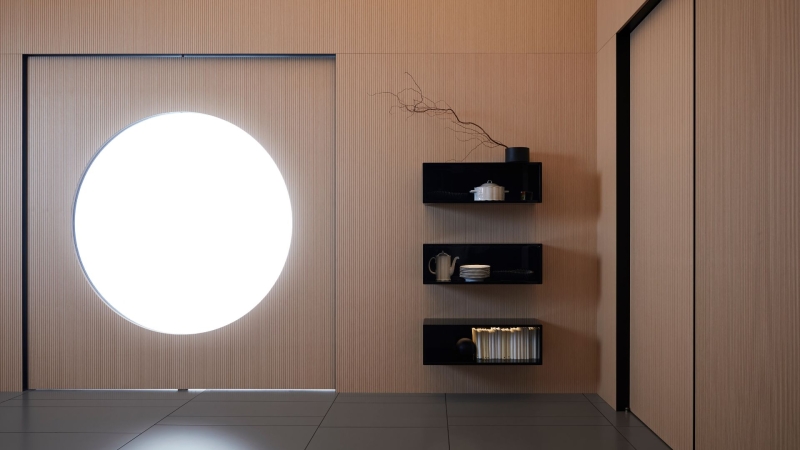Forget the old-fashioned wall panelling you’d find in your grandmother’s house. Meet a new system that adapts, flexes, and reconfigures itself to match the pace and needs of contemporary living.
Mentioned in this article
LualdiproLissoni & Partners
Mentioned in this article
LualdiproLissoni & Partners
If you think doors only disappear in fairytales, films, or fantasy novels, think again. Imagination has a tangible side – it takes shape when visionary brands decide to disrupt conventions and rethink the boundaries of design. What if a door wasn’t just a passage, but part of a system that redefines space? What if vertical surfaces could adapt completely to the architecture, turning into living furniture that also functions as finishing – flexible, reconfigurable, and responsive to both needs and taste? This is precisely the idea behind Framework, a new concept developed by Lualdi – a name that stands at the intersection of craftsmanship, technological innovation, and architectural culture.
The new system is designed by Piero Lissoni, who, besides creating some of the brand’s most iconic collections, has also been the company’s art director for 15 years. Known for its interior doors, bespoke furnishings, and contract solutions, Lualdi continues to evolve, blending artisanal heritage with industrial precision. With Framework, Lualdi introduces a radical way of conceiving boiserie – no longer a static wall covering, but a modular vertical system that integrates shelves, drawers, open compartments, hanging rails, and LED bars and a new thick acoustic door, built to perform and adapt. It’s a project that speaks to the dynamic nature of contemporary living, where spaces need to be fluid and flexible, while still reflecting a strong identity.
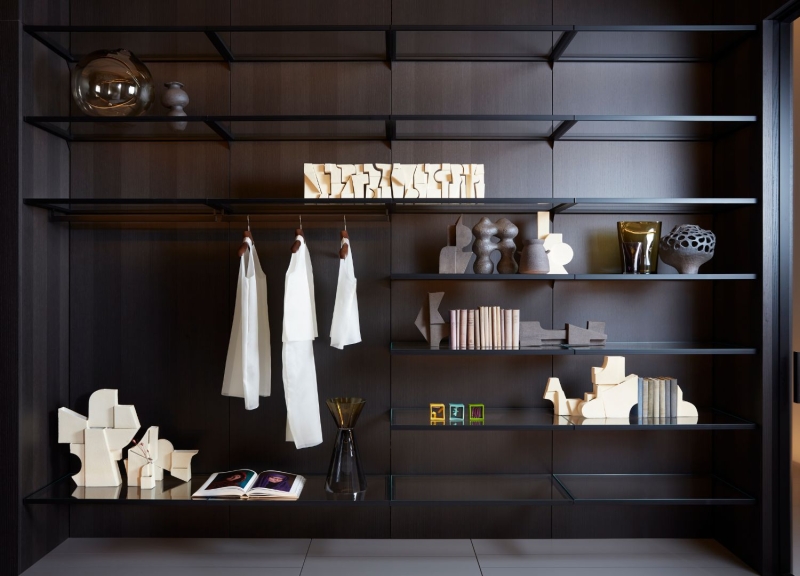
Framework system, Lualdi at Salone del Mobile 2025 – ph. Sara Magni
The boiserie, often perceived as a mere decorative element, becomes here an architectural element – customizable with different finishes and materials, such as wood, glass, aluminium, and potentially porcelain stoneware or fabrics, seamlessly integrated with wall systems, partitions, lighting, and accessories. Framework doesn’t simply furnish a room: it shapes it, offering a new perspective on how surfaces can participate in the layout and atmosphere of a space. It’s a hybrid of function and form, a convergence of design language and advanced production, in a perfect integration between architecture and interior design. In this sense, Framework opens up possibilities for integrated solutions where storage, light, passageways, and finishes converge in a single, unified language. It’s a system that responds to the complexity of contemporary spaces, offering designers tools that are both expressive and technically reliable.
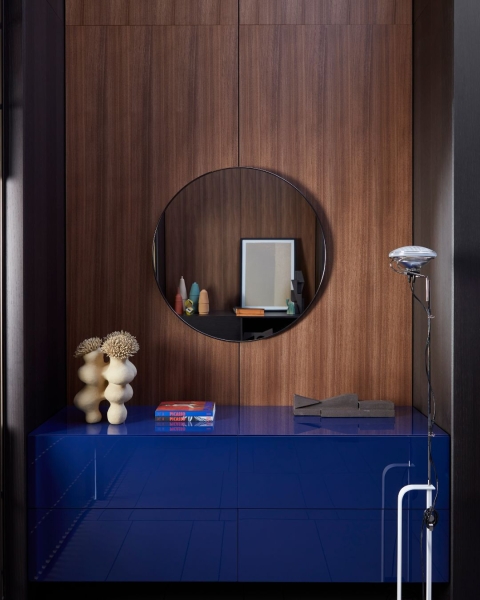
Framework system, Lualdi at Salone del Mobile 2025 – ph. Sara Magni
Lualdi’s story begins in 1859 as a carpentry workshop, and through five generations of family leadership, it has remained true to its roots while constantly reimagining them. The shift toward industrial production in the 1960s marked a pivotal moment, opening the company to collaborations with some of the most influential Milanese architects of the time. That same spirit of dialogue and experimentation continues today, with partnerships that span the global architecture scene.
Now headquartered just outside Milan, with flagship showrooms in Milan, London, Los Angeles, New York, and Miami, Lualdi is internationally recognized for its ability to combine high-end design with precision engineering. Its manufacturing processes reflect deep know-how, where traditional craftsmanship meets the latest technology to ensure performance, durability, and beauty. The result is a product that speaks the language of architecture, yet feels tailor-made.
With Framework, Lualdi not only reaffirms its leadership in the world of Italian design, but also responds to a growing demand for adaptable environments. Whether for residential interiors, hospitality spaces, or office fit-outs, the system is built to scale – both in function and aesthetics. The structure allows designers and clients to compose their own visual rhythm across vertical planes.
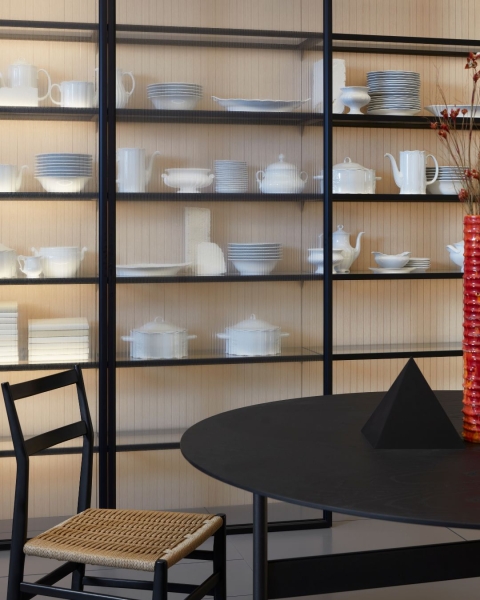
Framework system, Lualdi at Salone del Mobile 2025 – ph. Sara Magni
Beyond its technical features, Framework embodies a design ethos that values coherence, elegance, and spatial intelligence. Every detail, from the hardware to the jointing systems, has been carefully developed to maintain clean lines and seamless transitions. Handles and frames are designed not just as accessories, but as integral components that enhance the overall composition.
Lualdi’s commitment to sustainability is another key dimension. The company places environmental responsibility at the heart of its production processes – from the selection of raw materials to energy efficiency in manufacturing. Each product is designed with longevity in mind, contributing to a broader vision of sustainable architecture.
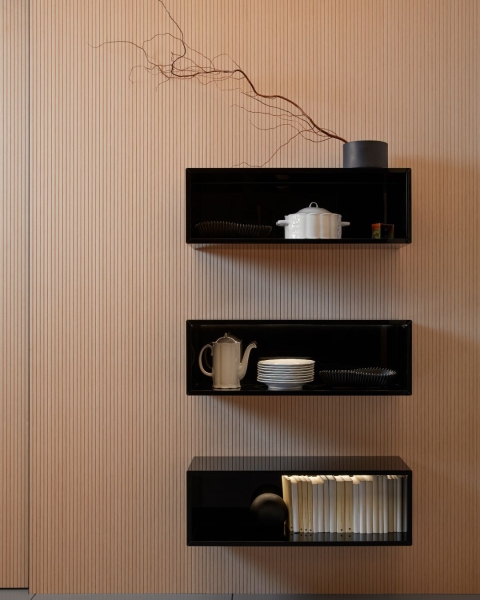
Framework system, Lualdi at Salone del Mobile 2025 – ph. Sara Magni
Framework is also emblematic of Lualdi’s belief in innovation as a continuous process. Rather than launching static collections, the company develops systems – open platforms that evolve over time, capable of adapting to new technologies, aesthetic shifts, and functional demands. It’s this strategic approach that has allowed Lualdi to remain relevant across generations of designers and users.
This system reflects the brand’s maturity and foresight. It’s a declaration of intent, rooted in a design culture that values depth over surface, and process over trend. It doesn’t shout, it integrates, and in doing so, it offers a quiet revolution in how we imagine the spaces we live and work in.

Framework system, Lualdi at Salone del Mobile 2025 – ph. Sara Magni
Whether used in residential or public spaces, Framework goes beyond flexibility, offering a practical solution that bridges architecture and furniture, combining stability with adaptability. Designed with both vision and precision, it meets the needs of everyday living.
Adding this system to its offer, Lualdi reinforces its role as not just as a producer, but as a strategic partner for architects and interior designers. The project reflects a clear focus on functional design, showing how doors and partitions can actively shape the way we experience and organize space.
